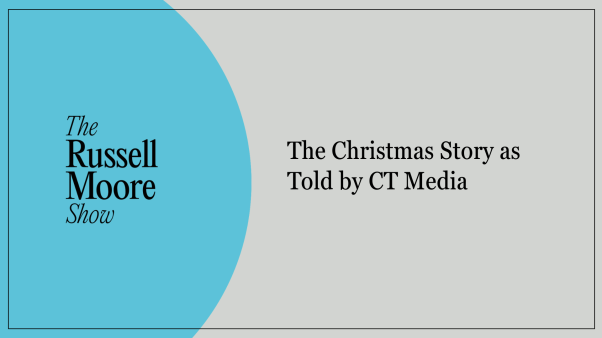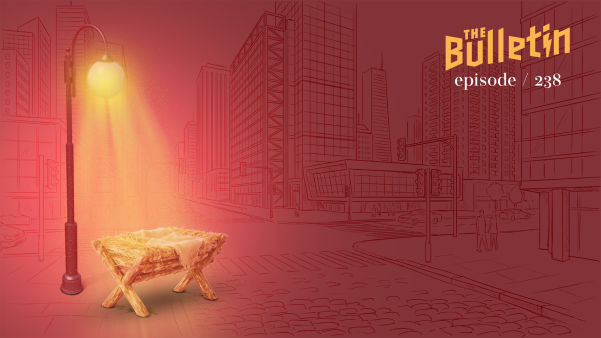When the English settlers of Jamestown, Virginia, sailed into Chesapeake Bay in 1607, the first thing they did was plant a cross on the shore. They may not have had the same kind of focused religious mission as the Puritans of New England, but Virginians cared about things of the spirit.
As typical English people, the Virginia colonists were stridently Protestant. They were products of the warring worlds of the Reformation. Roman Catholics were the great imperial and religious enemy to most English Protestants. But the recent discovery of a Catholic reliquary (devotional box) in the grave of an early Virginia leader suggests that the colony’s religious story may have been more complicated than we knew.
The site of the Jamestown colony has become arguably the most exciting archaeological dig in America over the past couple of decades. Scholars once assumed that the James River had long since covered over the site of the original Jamestown fort. But in the 1990s, renewed excavations revealed that the fort’s remains were still on land, just waiting to be dug up. The new dig has produced stunning and tantalizing evidence about life at Jamestown.
In 2011, Jamestown announced that it had discovered the foundations of the fort’s church, likely the first Protestant church ever built in America. That church also hosted the most famous wedding of the American colonial era, between John Rolfe and Pocahontas.
Now excavators have unearthed the graves of several of the earliest colonists, including the Reverend Robert Hunt, who performed one of the first Anglican Communion services in America in 1607. More controversially, the grave of Captain Gabriel Archer, one of the colony’s early leaders, yielded a silver box that, upon CT-scan analysis, turned out to be a Catholic reliquary. This revelation has produced a flurry of speculation about Archer’s faith and the presence of Catholics in what we always assumed was a solidly Protestant place.
The Pilgrims and Puritans of New England have always seemed like the most religious group among the early colonists. But one could hardly be English in the 17th century and not think about the world—or a colony— in spiritual terms. One of the most common reasons cited for founding Virginia, for example, was evangelizing Native Americans. In the Chesapeake, the English would “inform [the Indians] of the true God, and of the way to their salvation” through Jesus, Virginia Company proprietors said.
War and empire were likewise religious for Virginians. There was no greater threat to them than Spanish Catholics. A half-century before the English founded Jamestown, the Spanish established a Catholic mission on the same spot. The vulnerable Spanish outpost soon ran afoul of local Indians, who destroyed it. The Jamestown colonists hoped their new colony would fare better, with God’s blessing. A thriving Virginia would counter the “devilish doings of the Spaniards,” one early promoter insisted.
Virginia would be officially Protestant, and the 104 Englishmen (the first settlers were all men) had to attend Church of England services. Once they picked the site of the fort, the colonists erected a ramshackle chapel, with log benches and an old ship’s sail for an awning. In 1608, they constructed the more permanent church where John Rolfe and Pocahontas would marry.
As a matter of official policy, Jamestown and the English authorities backing it frowned upon Catholics. But even before Archer’s reliquary, the archaeological treasures of Jamestown had already revealed surprising evidence of Catholic material goods at the colony. Crucifixes, rosary beads, and devotional medals have all emerged from the fort’s remains. Experts have speculated that these must have belonged to one of the Polish, German, or Italian artisans known to have worked at Jamestown in its early decades. Further, there was an intriguing complaint from one settler in 1620 who testified that “Mr. Chanterton,” a colonist, “smells too much of Rome” and “attempts to work miracles with his Crucyfixe.”
But Archer’s reliquary raises the prospect that at least one of the colony’s leaders was a Catholic. Archer was an arch-enemy of Jamestown leader Captain John Smith. Once, when a couple of English colonists were killed in a fight with local Indians, Archer blamed Smith. He cited Smith for mismanaging the colony. Quoting Leviticus 24’s principle of an eye for an eye and a tooth for a tooth, Archer called for Smith’s execution.
Archer knew his Bible – at least enough of it to use it against Smith – but does the reliquary tell us that he was really (to the English) a wolf in sheep’s clothing? Perhaps Archer hid his faith from others, but used the reliquary in private devotions. Because the box is too fragile to open, the CT scan showed that the box contained bone fragments and an ampulla, or a sacred flask. These leave little doubt that the box was a Catholic devotional item.
Artifacts like these illuminate the history of Jamestown in a unique way. But they don’t tell us much about how people actually used these items. Was the silver box just a prized souvenir? Or did Archer find ways to use it in Anglican devotions? After all, Puritan critics complained that Anglican church life remained too “popish” after the Reformation, and that the Church of England needed much purification of its old Catholic remnants. Maybe Archer saw no problem using the reliquary, even though he considered himself a Protestant?
Another intriguing piece of the puzzle is that Archer was buried with his head pointing toward the east, which was a conventional way to position a cleric’s body in a grave. Some have suggested that Archer might not just have been a secret Catholic, but a secret Catholic priest.
The placement of the reliquary with Archer, however, may cast doubt on its conspiratorial significance. His funeral would have presumably been a public event, and it would have been hard to hide the silver box. Whatever the reliquary meant to Archer, those who oversaw his interment did not find it embarrassing. Archer’s real spiritual allegiance, and the meaning of the reliquary, probably were buried with him. But the artifact’s discovery demonstrates again what a fraught and fascinating religious world early Virginians lived in.
Thomas S. Kidd is Distinguished Professor of History at Baylor University, and the author of George Whitefield: America’s Spiritual Founding Father.









